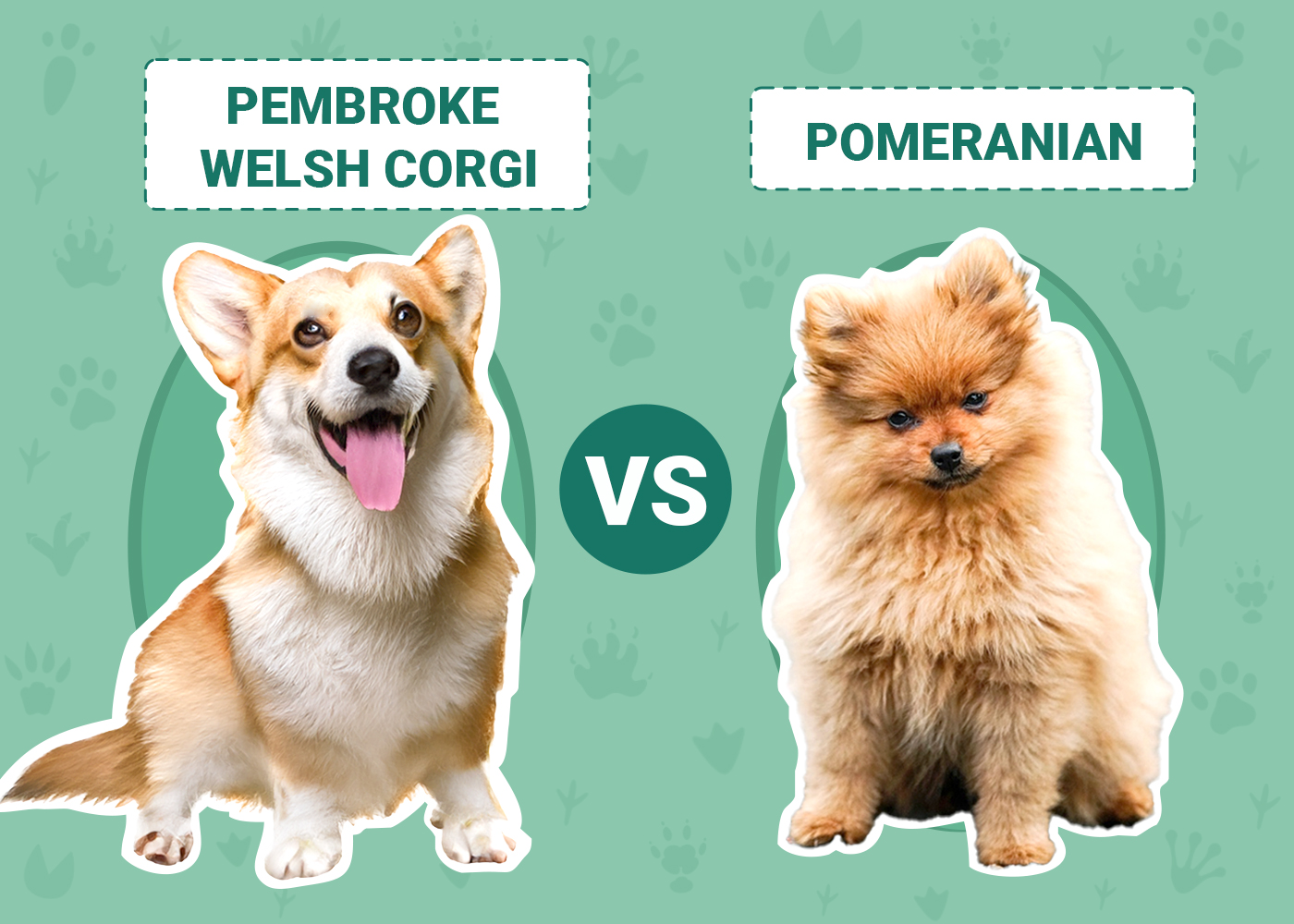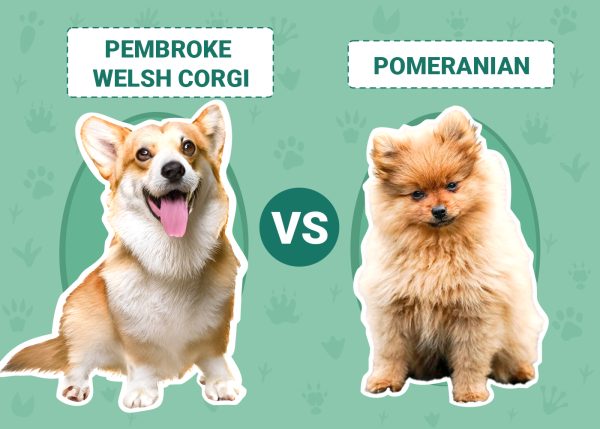Click to Skip Ahead
The Pembroke Welsh Corgi and the Pomeranian are both popular dog breeds. Although they have a few characteristics in common, they’re mostly quite different from each other. The Pembroke Welsh Corgi is a few inches taller than the Pomeranian and a few pounds heavier, although both are energetic and great companions. The Pomeranian was recognized as a breed by the AKC 46 years before the Pembroke Welsh Corgi was, but the Corgi is recognized as the more popular breed between the two, according to their AKC ranking.
Both breeds think they’re bigger than their small size and aren’t afraid to take on larger dogs. They’re both alert and quite vocal but are affectionate family dogs. Although they’re both beautiful breeds that have wonderful qualities, one breed might be better suited to your family and lifestyle than the other, so let’s take a deeper look into each one.

Visual Differences
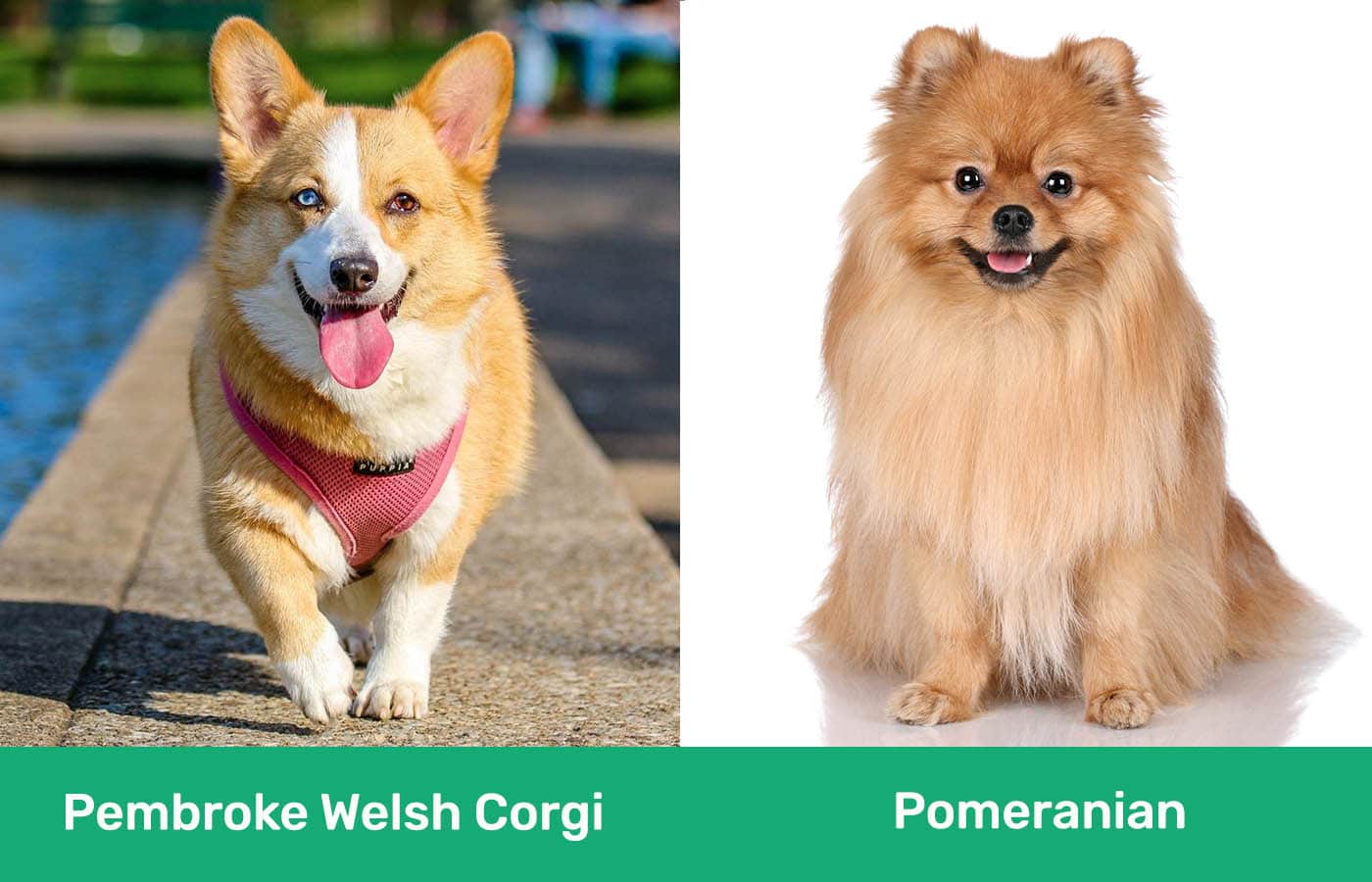
At a Glance
- Average height (adult): 10–12 inches
- Average weight (adult): 28–30 pounds
- Lifespan: 12–13 years
- Exercise: 1+ hours a day
- Grooming needs: Moderate
- Family-friendly: Yes
- Other pet-friendly: Mostly
- Trainability: Intelligent and responsive but strong-willed
- Average height (adult): 6–7 inches
- Average weight (adult): 3–7 pounds
- Lifespan: 12–16 years
- Exercise: 20+ minutes a day
- Grooming needs: Moderate
- Family-friendly: Often reserved around children but make great companions for the elderly
- Other pet-friendly: Usually
- Trainability: Obedient and intelligent, but their independence can get in the way

Pembroke Welsh Corgi Overview
Pembroke Welsh Corgis have been recognized as a breed by the AKC since 1934 and are more popular than the Cardigan Welsh Corgi, which is the older breed of the two. They originated from the Pembrokeshire area in Wales and were bred for herding and guarding. These dogs have short, weatherproof coats that come in red, fawn, sable, black, and tan, along with white markings. They have a foxy face, alert ears, a long body, and small legs with muscular thighs.

Personality / Character
These little dogs have affectionate personalities and make great companions. They are loyal, sensitive, and love to interact with their owners through play but won’t demand attention. However, they can be stubborn and strong-willed.
They often think they’re bigger than their short stature and will challenge anything that poses a threat, regardless of its size. Their intelligence, alertness, and fearlessness make them great watchdogs, but they do enjoy barking, which can be a problem for families with babies or who are worried about neighbors. Socialized Corgis do well in families with children and can adapt fine to other pets if introduced properly.
Training
Pembroke Welsh Corgis are the type of breed that is easy to train because they respond well to commands. They are energetic, alert, determined, and intelligent, which is why they’re commonly seen winning competitions at dog shows. However, their stubbornness and strong will can become an obstacle during training, so it’s important to be firm and consistent with them. Positive reinforcement is the way these dogs learn best due to their sensitive personalities, so give them lots of praise, pets, and treats during training.
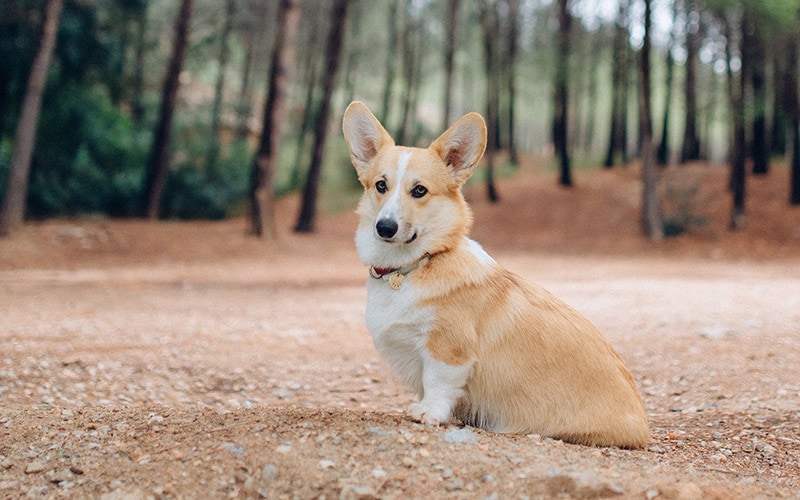
Health
This breed is a relatively healthy one, although they are at risk for hip and elbow dysplasia, which can cause pain and lead to arthritis. Medication supplements and surgery can help treat the condition. Corgis are also prone to patent ductus arteriosus, which is a heart condition that results in the dog not getting the right oxygen levels they need in their blood.
Von Willebrand’s disease is another health risk factor. It’s an inherited disorder that causes abnormal bleeding in Corgis because the blood is unable to clot properly. All dogs are prone to certain health issues, so it is important to take them to the vet for their routine examinations or if you notice any strange symptoms.
Care
Corgis are house dogs that don’t enjoy being kept outside because they’re sensitive to the heat and cold, even with their weatherproof coats. Their double coats do need regular brushing to reduce their shedding, but their grooming needs aren’t extreme. You can bathe a Corgi around once a month and trim their nails regularly to keep them short. Don’t forget to brush their teeth too.

Suitable For:
Pembroke Welsh Corgis are suitable for families that can offer them plenty of stimulation mentally and physically. As long as you exercise them every day, they can happily live in any environment, as long as it is protected from the heat and cold and full of love and care. Pembroke Welsh Corgis aren’t suitable for owners with allergies as they do tend to shed quite a bit and require frequent brushing.
- Great watchdogs
- Not demanding
- Easy to train when the right approach is given
- A healthy breed
- Sheds quite a bit
- Can be vocal

Pomeranian Overview
The Pomeranian has been recognized as a breed by the AKC since 1888, which was a good few years before the Pembroke Welsh Corgi became recognized. They are classified as a toy breed and make great companions, especially to the elderly, as young children can make them feel a bit uncomfortable.
These dogs originate from Pomerania in Northern Europe and have fluffy, medium-length, double coats that are straight. They come in a range of coat colors and markings, giving you plenty of options to choose from. This breed is tiny and has a foxy face, alert ears, and a fluffy tail that curls over their back.
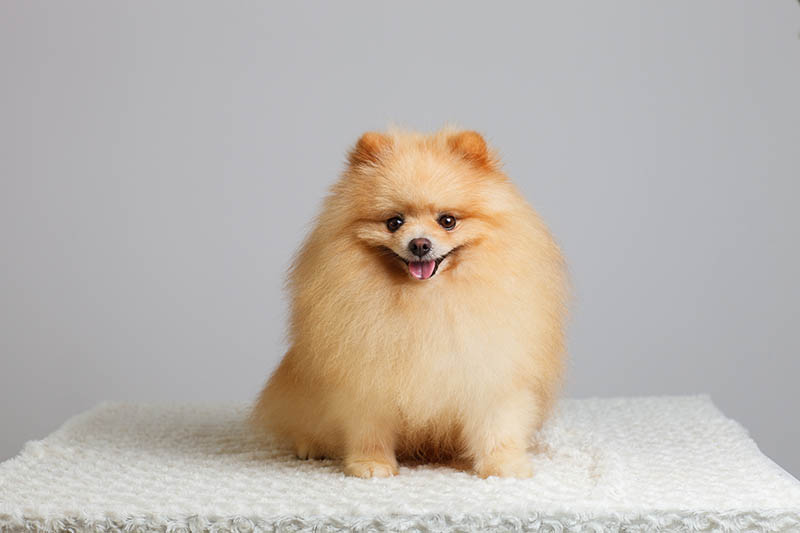
Personality / Character
The Pomeranian is alert and lively. They are great companions to the elderly as they tend to become lap dogs as they age. They do well in families with children if they’ve grown up with them. However, they can become reserved if they’re introduced to new children or are adopted into a family with children later on in their lives. They also do well in multi-pet households if introduced properly.
These little dogs are great watchdogs that like the sound of their own voice. They’re independent and know what they like and don’t like, which has the consequence of them being finicky eaters. It is important to be aware that these dogs aren’t as sturdy as many other dogs and can be easily hurt by rough children and larger dogs. You’ll need to teach children to be gentle around these dogs and consider if it’s safe to bring one into your home if you have large dogs that may hurt them unintentionally.
Training
This little breed loves to learn and is very intelligent, making them easy to train. Although they’re tiny, they do require and enjoy exercise in the form of walks and play. They do well in obedience and agility competitions and respond well to positive reinforcement. They don’t need long walks, so a 30-minute daily walk around the block will be more than enough. You can also play with and train them indoors, making them suitable for people who don’t have a yard.
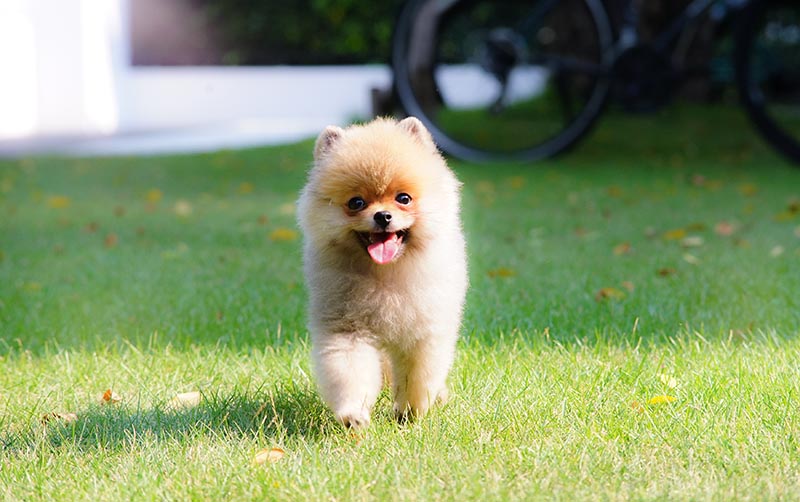
Health
Pomeranians are considered a healthy breed, but they can get injured easily. To prevent them from breaking a bone or causing injury to their joints, train them not to jump on and off your bed or furniture. These dogs often suffer from dry eye, distichiasis, and tear duct issues, so make sure to get their eyes checked regularly, as it can be painful and irritating for your dog.
They’re also prone to a condition called collapsing trachea, which occurs when the trachea becomes too flexible and makes breathing difficult. Patellar luxation is also common among Pomeranians, which can cause limping, and surgery might be required to rectify the positioning of the kneecap. As with all dog breeds, staying consistent with annual vaccinations and routine examinations will keep your dog healthy and catch any issues early on.
Care
Pomeranians have a lot of hair and are very fluffy but don’t require excessive grooming. They are moderate shedders and will need to be brushed at least once a week, so they aren’t the best option for people with allergies. These dogs are sensitive to heat and cold, so never leave them outside for long periods. They will need to have their nails trimmed, their teeth cleaned, and their ears checked regularly, and they should be bathed every 4–6 weeks to keep them looking good.

Suitable For:
Pomeranians are suitable for families, especially if the children are old enough to understand that they need to be gentle and careful with the dog. They’re great for the elderly because they don’t require a lot of physical exercise, and a 30-minute walk is more than enough. They’re happy to stay indoors, don’t need a yard to run in, and are small in size, making them great apartment dogs.
- Come in a variety of colors and markings
- Excellent watchdogs
- Easy to train
- Don’t require a lot of exercise
- Easy to care for
- Tend to be finicky eaters
- Can bark excessively
- Aren’t suitable for people with allergies
- Can get hurt easily

Which Breed Is Right for You?
Both the Pomeranian and Pembroke Welsh Corgi are excellent dog breeds that have many great qualities. Both breeds are easy to train, energetic, and want to be a part of household activities. They’re both considered healthy breeds, but they both shed and tend to bark quite a bit.
If you have a family with younger children and large playful dogs, the Corgi might be a better option for you to consider because you won’t have to constantly worry about them getting injured accidentally as you would with a Pomeranian.
However, if you are a single person who lives in a small space and is looking for a companion dog, the Pomeranian is an excellent option, thanks to their alert and affectionate personalities. They’re also great for the elderly who can’t offer long walks and plenty of exercise, which a Corgi requires.
See also:
Featured Image Credit: (L) Natalia Fedosova, Shutterstock | (R) Jumpstory

